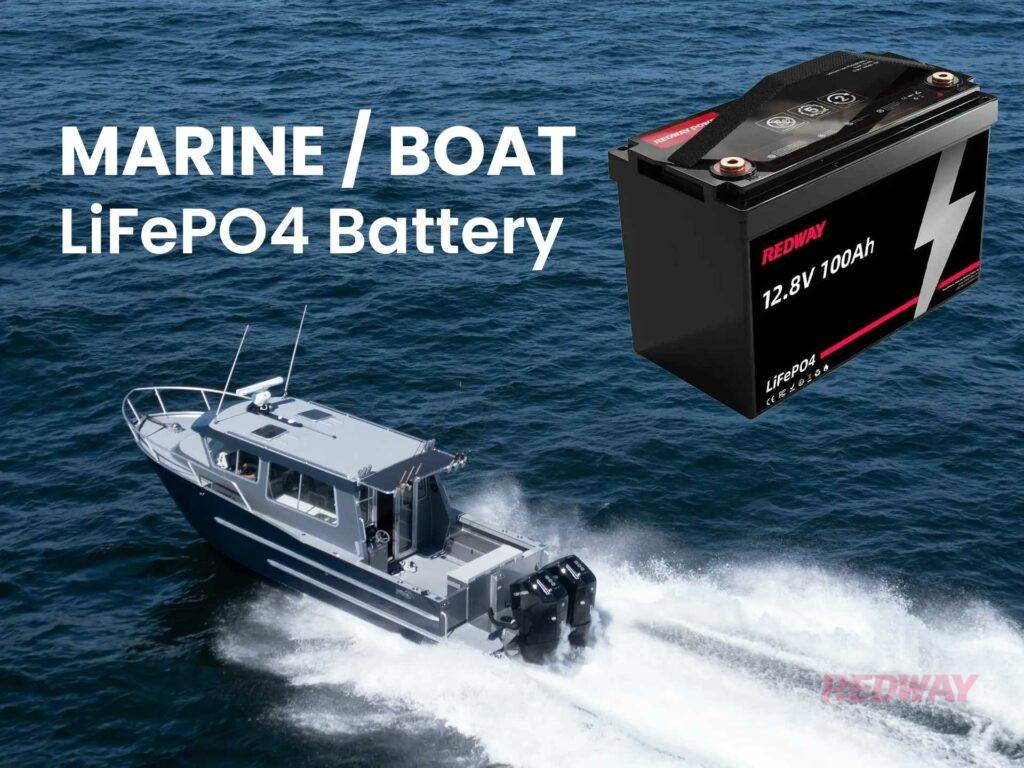LiFePO4 Marine Batteries, also known as lithium iron phosphate batteries, have become the preferred choice for many marine enthusiasts. Their enhanced safety profile and robust performance make them a superior option compared to other lithium-ion battery chemistries. But the question remains: Will LiFePO4 Marine Batteries catch fire or blow up? In this article, we delve deep into the safety aspects of LiFePO4 batteries, their advantages, and the necessary precautions to ensure their safe use.
Understanding LiFePO4 Chemistry
The chemistry of LiFePO4 batteries is fundamentally different from other lithium-ion batteries. Unlike lithium cobalt oxide batteries, which are more prone to overheating and combustion, LiFePO4 batteries use lithium iron phosphate as the cathode material. This chemical structure provides several key safety benefits:
- Thermal Stability: The iron-phosphate bond in the cathode material is more stable under high temperatures, reducing the risk of thermal runaway.
- Lower Risk of Overheating: LiFePO4 batteries have a lower operating temperature, which minimizes the chances of overheating.
- Non-combustible Materials: The absence of cobalt, which is a highly reactive material, further enhances the safety of LiFePO4 batteries.
Key Safety Features of LiFePO4 Batteries
Enhanced Thermal Stability
One of the primary reasons for the safety of LiFePO4 marine batteries is their thermal stability. These batteries can withstand higher temperatures without decomposing. This characteristic is crucial for marine applications where batteries may be subjected to various environmental conditions.
Intrinsically Safe Design
The design of LiFePO4 batteries inherently mitigates risks associated with short circuits and overcharging. Advanced Battery Management Systems (BMS) are integrated into these batteries to monitor and control charging and discharging processes, ensuring that the battery operates within safe parameters.
Resistance to Thermal Runaway
Thermal runaway is a common issue in lithium-ion batteries, leading to fires and explosions. However, LiFePO4 batteries exhibit a much lower propensity for thermal runaway. Their internal resistance and thermal management properties ensure that even under extreme conditions, the battery remains stable.
Comparison with Other Battery Chemistries
To understand why LiFePO4 batteries are safer, it is essential to compare them with other commonly used lithium-ion batteries:
- Lithium Cobalt Oxide (LCO) Batteries: These batteries are widely used in consumer electronics but are prone to overheating and thermal runaway due to the presence of cobalt.
- Lithium Manganese Oxide (LMO) Batteries: While safer than LCO batteries, LMO batteries still pose a higher risk of overheating compared to LiFePO4 batteries.
- Lithium Nickel Manganese Cobalt Oxide (NMC) Batteries: These batteries balance energy density and safety but do not match the thermal stability of LiFePO4 batteries.
Safety Precautions for LiFePO4 Batteries
Although LiFePO4 batteries are safer, it is crucial to follow proper handling and safety guidelines to maximize their safety:
Use Reputable Manufacturers
Always choose batteries from reputable manufacturers. Quality control and adherence to safety standards are paramount in the production of LiFePO4 batteries. Reputable brands ensure that their batteries are tested and certified for safe use.
Implement Proper Battery Management Systems
A robust Battery Management System (BMS) is vital for monitoring and controlling the battery’s performance. The BMS protects against overcharging, over-discharging, and short circuits, ensuring the battery operates within safe limits.
Regular Inspections and Maintenance
Regular inspections and maintenance are necessary to ensure the longevity and safety of LiFePO4 batteries. Check for any signs of damage or wear, and ensure connections are secure and corrosion-free.
Proper Storage and Handling
Store LiFePO4 batteries in a cool, dry place away from direct sunlight and heat sources. Avoid storing batteries in a fully charged or fully discharged state for extended periods. Proper storage conditions help maintain the battery’s integrity and safety.
Advantages of LiFePO4 Marine Batteries
Apart from their safety features, LiFePO4 marine batteries offer several other advantages that make them ideal for marine applications:
Longer Lifespan
LiFePO4 batteries have a longer lifespan compared to other lithium-ion batteries. They can endure thousands of charge and discharge cycles without significant capacity loss, making them a cost-effective option in the long run.
Consistent Performance
These batteries provide consistent performance throughout their lifespan. Unlike lead-acid batteries, which suffer from voltage drops as they discharge, LiFePO4 batteries maintain a stable voltage output, ensuring reliable power supply for marine equipment.
Lightweight and Compact
The lightweight and compact design of LiFePO4 batteries makes them easy to install and handle. This is especially beneficial in marine environments where space and weight are critical considerations.
Conclusion
In conclusion, LiFePO4 marine batteries are a safe and reliable choice for marine applications. Their enhanced thermal stability, intrinsic safety features, and resistance to thermal runaway make them less likely to catch fire or blow up compared to other lithium-ion batteries. By following proper safety guidelines and choosing reputable manufacturers, you can further minimize any potential risks associated with these batteries. Embrace the advantages of LiFePO4 marine batteries and enjoy a safer, more efficient power solution for your marine needs.




